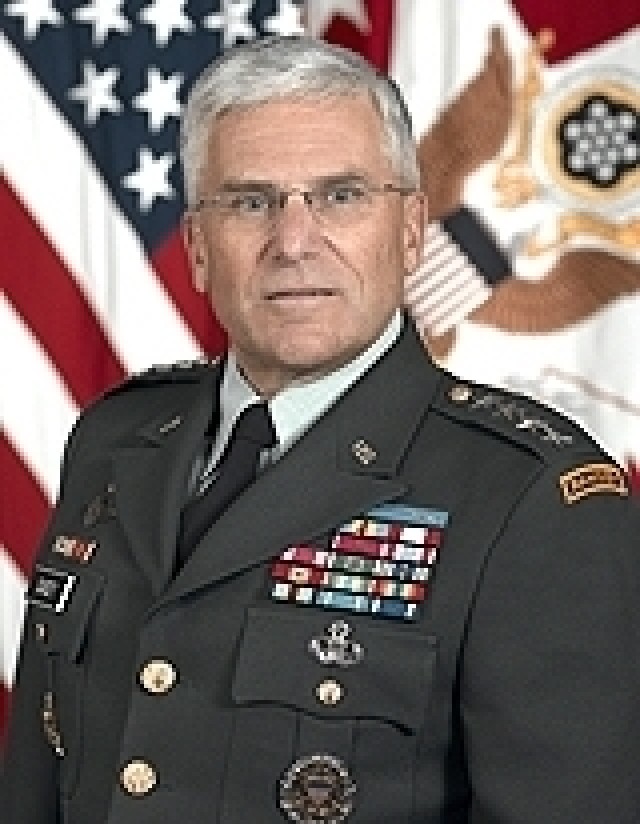WASHINGON (Army News Service, April 10, 2008) Aca,!" The chief of staff of the Army visited Capitol Hill Wednesday to discuss the ArmyAca,!a,,cs 2009 military-construction budget and how its planned building projects are essential to helping the Army rebalance itself.
Gen. George W. Casey Jr. told the House Appropriations Subcommittee on Military Construction, Veterans Affairs and Related Agencies that military construction is an important part of the ArmyAca,!a,,cs plan for the future.
The Army has requested $11.4 billion to support readiness and transformation in the FY 2009 budget. Active-Army growth, operational requirements, modular transformation and barracks modernization account for $4.6 billion of that request; $4.5 billion is earmarked for executing Base Realignment and Closure, and Army stationing; and $821 million is for reserve-component transformation.
With congressional support, he said, the Army will have completed 743 MILCON projects between FY 2006 and FY 2013, including 33 brigade-size complexes, 109,300 barracks units, 4,600 Family housing units and 133 child-development centers.
Accompanied by Keith Eastin, assistant secretary of the Army for Installations and Environment, Gen. Casey emphasized that the Army isnAca,!a,,ct Aca,!A"hollow or broken,Aca,!A? but because it is so focused on the current fight, it cannot sustain the force or prepare for the future the way he would like. The Army isnAca,!a,,ct where it needs to be, he said, but it is still the best fighting force in the world.
It will require four imperatives to get back into balance Aca,!" sustain, prepare, reset and transform Aca,!" Aca,!A"and military construction has a key role in each of those areas,Aca,!A? Gen. Casey said.
Aca,!A"We must sustain our Soldiers and their Families. They are the heart and soul of this organization Aca,!A| and the environment in which Soldiers train, Civilians work and their Families live is key to attracting and retaining quality men and womenAca,!A| The core of our strategy is retaining Soldiers and their Families,Aca,!A? he added.
The Army Family Covenant pledges to improve programs, services and housing, while the Army Medical Action Plan ensures special care for the ArmyAca,!a,,cs wounded. According to Gen. Casey, MILCON projects under these initiatives will significantly improve quality of life for Soldiers and Families who have been stressed and stretched by more than six years of war.
Gen. Casey told the congressmen that in fiscal year 2009, the Army is requesting $3.3 billion of its MILCON budget for projects to improve Soldier barracks and improve quality of life. Because 46,000 Families, 33,000 Soldiers and 98,000 trainees are currently living in inadequate housing, Gen. Casey said congressional support was crucial.
In his opening remarks, Subcommittee Chairman Chet Edwards also talked about the importance of quality-of-life initiatives and congratulated Gen. Casey and the Army for paying such close attention to the welfare of Soldiers and Families.
Gen. Casey added that the Army has to prepare Soldiers for success in both the current fight and future conflicts and is developing world-class training facilities, such as an urban-terrain site, to increase the ArmyAca,!a,,cs mobilization and power-projection capabilities. The training facilities equal $242 million of the FY 2009 request.
Both Soldiers and equipment need time to reset and recover after long, arduous deployments, he said, and the quality of installations is critical in this mission to train, mobilize, deploy, and reset Soldiers.
Aca,!A"This MILCON budget really impacts on the quality of installations, the ability of installations to take these units coming back, reorganize themAca,!A|and make sure there are facilities, opportunities for Soldiers and Families,Aca,!A? said Gen. Casey.
Many of those installations are in the process of transforming under a plan that includes the Grow the Army initiative, the 2005 Base Realignment and Closure Act and the Global Defense Posture Realignment. The plan restructures the ArmyAca,!a,,cs capabilities so the force can grow, become more agile, responsive and expeditionary, and will increase the Army by 74,200 Soldiers. It will also return 41,000 Soldiers and Families from Europe and Korea to the United States by 2011.
The congressmen were concerned that Soldiers stationed on installations overseas that are slated to close arenAca,!a,,ct having their needs addressed. In response to a question from Representative John Carter, Gen. Casey acknowledged that the Army canAca,!a,,ct make improvements in some instances because of BRAC.
After Edwards mentioned that only 10 percent of married Soldiers in Korea receive accompanied tours, but that Gen. B.B. Bell, commander of U.S. forces in Korea had testified that up to 70 percent would bring their families given the opportunity, Eastin said the Army is spending $125 million to build new housing units at Camp Humphreys.
Aca,!A"The scope of MILCON and BRAC efforts over the next (few) years is (huge),Aca,!A? Gen. Casey said.
He emphasized that this is the ArmyAca,!a,,cs largest organizational change since World War II, which involves realigning the ArmyAca,!a,,cs entire global infrastructure, a job that cannot be completed without full and timely funding.
According to Gen. Casey, over the past three years, average MILCON funding delays of four to six months have increased construction costs, adding that it is an especially crucial time for BRAC construction. Without the remaining $560 million supplemental, he cautioned, the Army will not meet 31 of 90 FY 2008 BRAC projects, which would destroy a carefully planned BRAC timeline and seriously jeopardize the ArmyAca,!a,,cs ability to meet the September 2011 deadline, as required by law.




Social Sharing